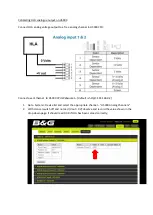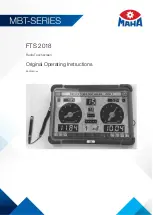
4
3. Primary ammeter: monitor the output current value of "L1, L2" terminal.
V.Instructions
1. Before turning on the power, turn off the "power control" switch, and adjust the "A
phase adjustment", "B phase adjustment" and "C phase adjustment" counterclockwise to
zero.
2. Turn on the power, connect the "power input" A, B, C, and N terminals to a three-phase
four-wire power supply, and then connect the "A, B, C phase current output" terminals to
the device under test with special test leads.
3. After the connection is completed, close the "Power Control" switch, press the "Start"
button, and clockwise adjust the required test current for "A phase adjustment", "B phase
adjustment" and "C phase adjustment"), and then press " Stop” button and press the
“Start” button again to perform characteristic tests on the tested switch, circuit breaker,
and bus.
4. For the operation of lack of phase and unbalanced operation of three phases, only one
phase needs to be disconnected or adjusted to zero and open.
5. If there is only 220V power supply on site, you can short-circuit the ABC input to the
live wire of the power supply, and connect the N of the equipment to the neutral wire;
other operation methods are the same as 1, 2, 3, and 4.
VI.Safety Precautions
(1) For the safety of the operator and the instrument, ensure that the instrument is well
grounded.
(2) Connect the ground wire first when preparing for the test, and remove the ground wire
last when the work is completed.
(3) The power supply connected to the instrument is required to be able to withstand the
impact of 30A current.
(4) When connecting the instrument to the test product, pay attention to check whether
each wiring is wrong, so as to avoid damage to the equipment due to incorrect wiring.
(5) The maximum current value of the set over-current protection should not exceed the
rated output current value of the instrument.



























